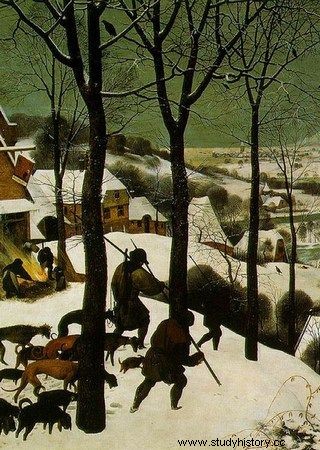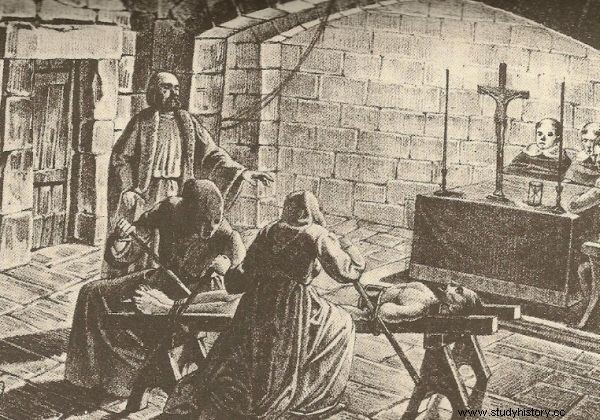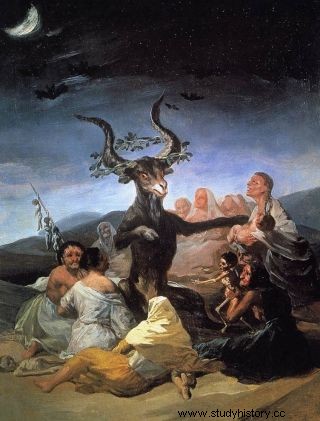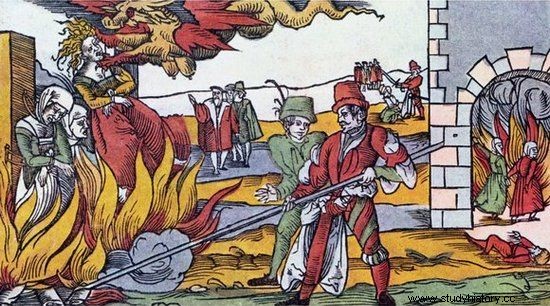The direct link between the so-called Little Ice Age and witch hunts, which led to up to 100,000 ruthless trials across Europe, was pointed out by Saarland University professor Wolfgang Behringer. The same vision was outlined by Laura Lee in the book "If not the weather" published by Demart a few months ago.
There is still debate among historians, archaeologists and climatologists as to when exactly began and ended the so-called Little Ice Age. Some of its origins can be traced back to the fourteenth century, others only in the second half of the fifteenth century. The culmination period was roughly 1570-1630, at least for Western Europe.
While the specific dates are not clear, hundreds of historical sources report the effects:frosts brought famine to whole regions, hailstorms ravaged villages and towns, allegedly the Baltic could be reached on foot to Sweden, and merchant ships had a problem with calling ice of Dutch ports.

The Little Ice Age took its toll on the people of Europe. The illustration shows a fragment of Pieter Bruegel's painting “Hunters in the Snow”.
They enchant the weather? To pile with them!
No wonder that supernatural forces were sought in the growing crisis. Wolfgang Behringer researched the witch trials material, concluding that the greatest persecution occurred in the years of particularly severe frosts:1560-1574, 1583-1589, 1623-1630 and 1678-1698.
Anyway, the Catholic Church, after centuries of an ambivalent approach to witchcraft, decided in 1484 through the mouth of Pope Innocent VIII that witches could control the weather and bring natural disasters to people.
The topic was developed by the authors of the famous "inquisitor's guide": Hammer for witches. This book, reissued almost 30 times over the course of a century, contained an ominous chapter, so fitting for the period of climatic turbulence: How they cause and fuel hail storms and ordinary storms, and cause lightning to hit people and animals.

After all, you know immediately that it is guilty! Frost sent the inquisitor to frostbite his feet!
Soon, accusations of hail, rain, frost and blizzard were poured over thousands of alleged witches. It is not difficult to find examples when it was bad weather that started the process in a given city or village. This was the case in Wiesensteig in 1562, where a hailstorm (covering an area of several hundred square kilometers) destroyed the roofs, windows and devastated the crops.
"Weather Sabbath"

Did such frightened people imagine the moment they were hailed by cruel witches?
Within a few months, nearly 70 participants of the devilish weather conspiracy burned at the stake. In this case, the ringleader of the whole action was the local pastor, but it was often the fat who called for a settlement with the witches. A chronicler from the Franconian Zelt wrote in 1626:
Everything froze, which hasn't happened since I can remember. And that was the reason for the great price increase (...) . And for this reason, pleas and pleas began among the mob, it was asked why the authorities continued to tolerate witches and sorcerers destroying the crops. Thus, the prince bishop punished these crimes.
It was no different in France. At the end of the 16th century, Johann Junden of Tréves wrote:
Since everyone thought the constant crop failures were causing witches out of diabolical hatred, the whole country advocated eradicating them.
Was it really the cooling of the climate that was behind the witch-hunt? There is no doubt that with the worst weather crisis, from the 1960s-1970s, In the sixteenth century, the culmination of the hunt for women practicing magic also began.

Good witch, she's a witch at the stake.
In addition, the persecution of alleged witches ceased in the first half of the 18th century. Just when the climate in Europe stabilized. Of course you can't blame all the blame on the weather, but linking witchcraft hunting to it seems like an interesting hypothesis ...
Source
- Laura Lee, If it weren't for the weather… How the weather changed history , Demart, Warsaw 2010, pp. 119-125.
